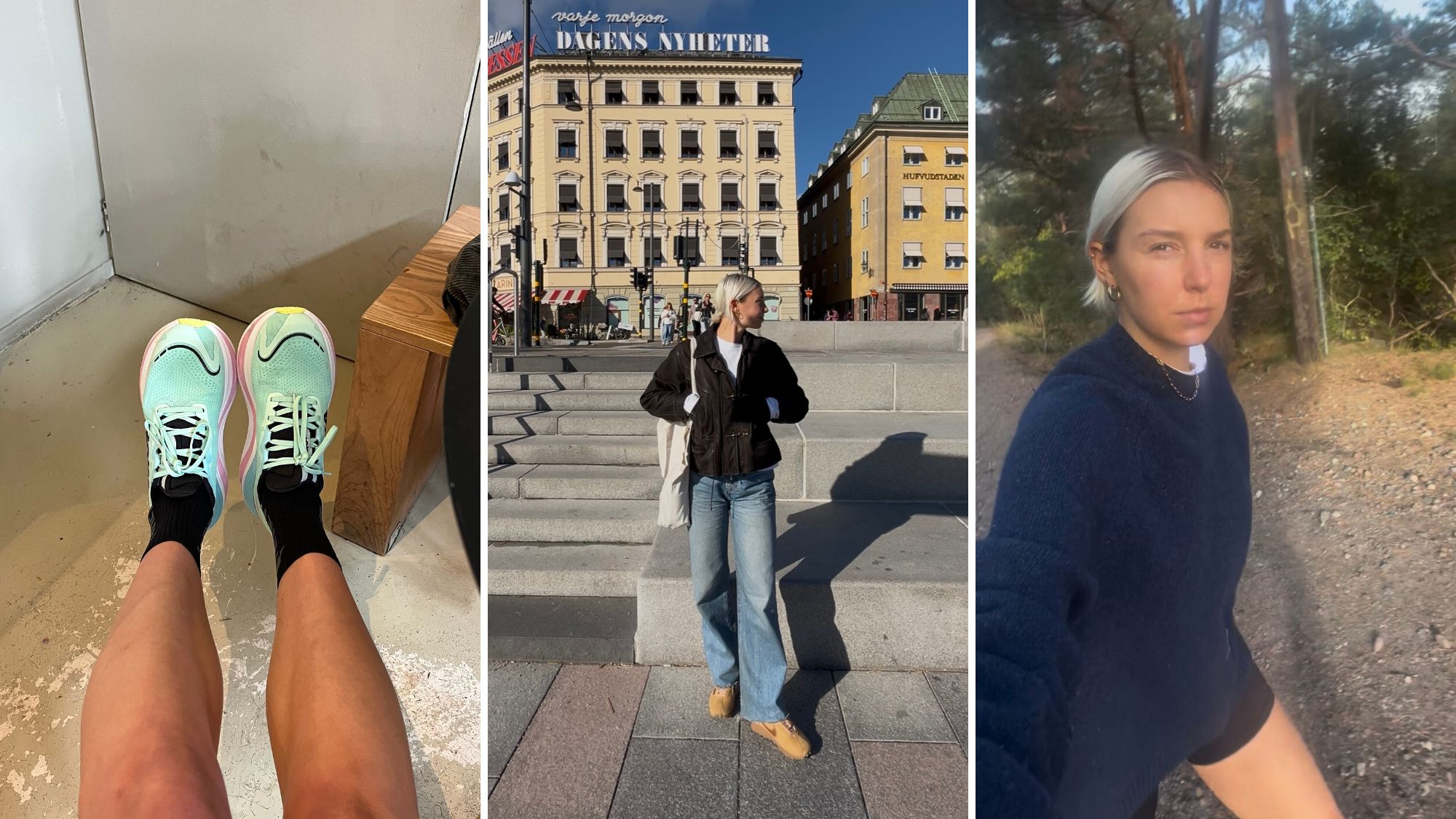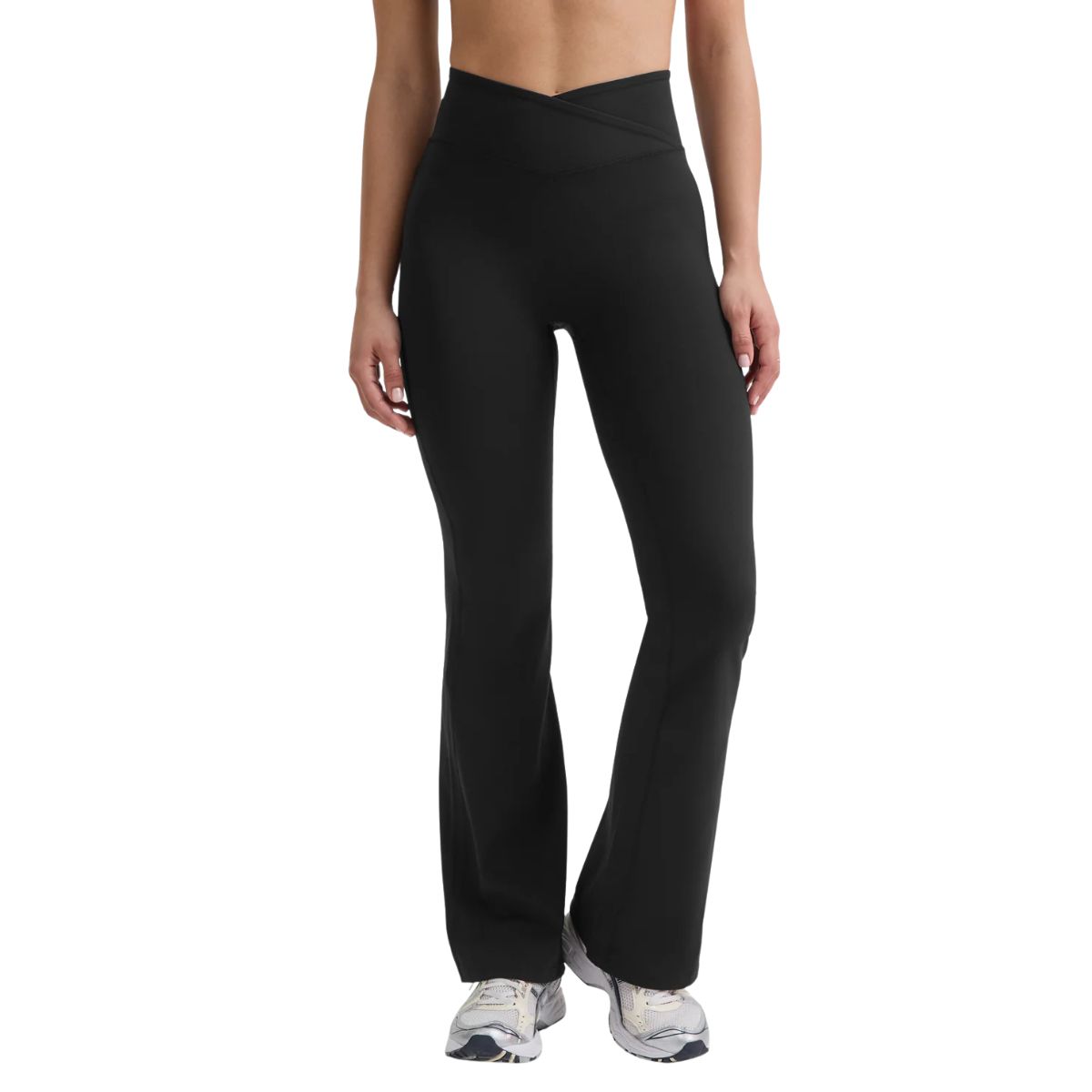Everyone's Talking About Posture Walking – So I Tried It for a Week and Honestly? I've Never Felt Taller
One small step for posture, one giant leap for lower back pain.


I don’t know about you, but I never get tired of walking trends. Unlike some of the more flash-in-the-pan fitness ideas, walking is free, simple and universally known to benefit our physical and mental health. Brilliant for boosting our cardiovascular system, mental clarity and overall lifespan, it’s truly the unsung hero of the health world.
Which is why, when I saw that Google searches for “posture walking” had spiked by 40% last quarter, I went straight to TikTok (the oracle of all catchy fitness trends) to see what it was all about.
It’s no more groundbreaking than it sounds. Instead of focusing on distance, posture walking is all about how you walk, encouraging you to pay conscious attention to your body position as you take each step.
It might sound straightforward, but the state of our posture is a growing concern. With lower back pain now the leading cause of disability worldwide, and tech neck (pain in the neck, shoulders, and back caused by poor posture from staring at screens) affecting 64% of remote workers, it’s clear that in our modern lives, being able to hold ourselves upright isn’t a guarantee.
Posture isn’t just a problem when we’re sitting, either. Our phones go everywhere with us, whether we’re hot girl walking, colour walking, or just running errands. Let’s face it, who hasn’t gone for a walk only to find themselves checking emails the whole time?
I know I have. So, in the name of journalism, I decided to give posture walking a go for one week. With no scrolling or on-the-go WhatsApping to distract me, I zoned in on engaging my core and breathing deeply. With TikTok’s promises of better joint health, digestion, and mental wellbeing ahead of me, I was curious to see how I’d feel.
To find out how it went, keep scrolling. And if you’re looking to up your daily step count, make sure to browse our reviews of TikTok’s viral hot girl walk, colour walk and silent walking challenge. We’ve also got plenty of workouts to support your walking journey, including this guide to the best walking workouts for beginners.
Celebrity news, beauty, fashion advice, and fascinating features, delivered straight to your inbox!
Posture Walking Is Going Viral, With Surprising Health Benefits
What is posture walking?
On paper, posture walking couldn’t be simpler. “It’s the practice of walking with deliberate, upright alignment,” says Fraser Richardson, sport and exercise expert at Protein Works. “Posture is a habit, so the more often you gently remind yourself to realign, the more natural it becomes. It’s about being mindful of how you move, not how far, how fast, or what gear you’re using.”
That’s why it’s best to think of it less like a formal workout and more as something to be built into your daily routine. “Ideally, it would become second nature,” says Richardson. “With practice, your body automatically falls into that more supportive, efficient way of moving."
So, what does a ‘good’ posture actually look like? According to Michael Fatica, osteopath and co-founder of the Back in Shape programme, it means that our body is in a vertically aligned, neutral position. “We’re looking for a stacked position with head over ribcage, ribcage over pelvis and pelvis over midfoot,” he explains.
That phrase, “neutral spine,” is one that comes up often in Pilates classes or yoga sessions. In practice, it means that your “natural curves are maintained, with no forced arching or slumping,” says Fatica.
Whilst retraining your posture might feel like hard work at first, it shouldn’t mean that you end up standing stiffly. “We’re looking to maintain a natural, comfortable position that puts the least strain on the body, with your shoulders back and relaxed and your weight evenly distributed,” says Dr Mustafa Alnaib, musculoskeletal doctor at Jorja Healthcare and director at ACTIVATE MSK Clinic.
Why is good posture important?
So now we know what good posture looks like, why does it actually matter?
Well, the truth is that our posture affects so much, from how we breathe, to how well we digest our food and how energised we feel day to day, as well as our susceptibility to muscle and joint injuries. In fact, one 2018 study, published in the International Journal of Biomedical Research, found that having your head tipped forward (as we tend to when staring at our screens) causes your breath to shallow almost immediately, whilst another 2021 paper found that a slouched or hunched position may be associated with increased gas retention and bloating.
“Walking with a slouched posture can compress the stomach and intestines, slowing gut motility and worsening issues like bloating, reflux, and constipation,” explains Richardson.
And actually, whilst our posture is often something we think about when we’re sitting down, it’s arguably even more important when we’re moving around. “When you walk, your body is in motion and gravity amplifies the effects of poor alignment, meaning a forward-leaning head or slouched spine not only strains joints but also compresses your organs, something sitting doesn’t intensify in the same way,” he says.
What are the benefits of posture walking?
While walking more consciously won’t give you perfect posture on its own, the experts say that when done regularly, posture walking promises a whole host of benefits.
“Posture walking can benefit almost everyone, particularly those who feel tightness in the shoulders, neck or back after a day at a desk,” says Dr Alnaib, who says that, as with any exercise, the benefits accumulate over time.
1. Better digestion
“By keeping the spine tall and the head stacked over the body, posture walking gives the gut more room to function, helping food move smoothly through the digestive tract and supporting overall digestive health,” says Richardson.
2. Improved breathing
“Good posture allows the diaphragm and lungs to expand fully, increasing oxygen intake,” Richardson explains. “By avoiding that ‘diagonal neck’ tilt or the ‘text neck’, you free up the airways, boosting stamina and reducing fatigue.”
3. Reduced back & neck pain
“Hunched shoulders and a forward head posture put extra stress on the spine,” says Richardson. “Walking tall with the head aligned above the shoulders encourages spinal alignment, reducing the risk of aches and chronic pain.”
4. Boosted energy & mood
This one might surprise you, but research shows that sitting or standing taller might actually be an effective stress reliever. The study found that, in the face of stress, an upright posture maintained self-esteem and positive mood more than a slumped posture.
Couple that with the well-known mental health benefits of fresh air and movement, and “walking upright with shoulders back can increase confidence, lower stress, and improve overall mental wellbeing,” says Richardson.
5. More efficient movement
“An aligned body moves more smoothly, wasting less energy,” concludes Richardson. “Proper posture engages the core and glutes, helping you burn calories more effectively while lowering injury risk.
@thedavisstandard Most of us are hunched over from phones and computers — and it shows when we walk. My 73-year-old mom has the best posture I’ve ever seen, and she noticed how bad mine was. Here are her simple tips to fix your walking posture so you don’t look older than you are!
♬ original sound - Thedavisstandard
How do I walk with better posture?
By this point, you’re probably already lacing up your trainers and heading out for your first posture walk. But before you go, the experts have some tips.
“Imagine there’s a string gently lifting you from the crown of your head,” says Richardson, who explains that this helps to keep your spine long without you having to force it. “Keep your shoulders relaxed and let your arms swing naturally, rather than locking them in place. Think about walking tall but easy, so your chest is open for good breathing, and your steps feel light rather than heavy. It’s not about looking stiff or trying to forcefully control perfect movement, but more about walking in a way that feels freeing and balanced."
I built posture walking into my routine every day for a week - and my core already feels stronger
Days one to three
Before kicking off my week of posture walking, I took Fatica’s advice and set daily reminders on my phone to check in on my posture. I’ve tried standing taller in the past, but I know from experience how quickly the intention fades when work gets busy.
On days when I’m commuting, I have a built-in 15-minute walk to the train station, which feels like the perfect place to get things started. For a chronic multi-tasker like me, the hardest part wasn’t the walking. I kept my phone in my pocket the whole way. Embarrassingly difficult, in fact. Embarrassingly difficult, in fact. I even toyed with the idea of holding it in front of my face so I could posture-walk and reply to emails at the same time.
But in the spirit of getting the full mental and physical benefits of my posture walks, I resisted. And by the time I reached the platform, I genuinely felt clearer-headed. My body had worked harder, too. My lower abs were switched on, my pelvis was tucked, and for the first time in ages, I was hyper-aware of my supraspinatus and rhomboid muscles (those ones between your shoulder blades - don’t worry, I had to Google them too). They felt like they were crying out for an osteopath, and I made a mental note to dig out my foam roller when I got home.
Throughout the day, I reminded myself to roll my shoulders back every time I stood up, whether I was walking between my desk and the coffee machine or heading from one meeting to the next.

Ashleigh started her week of posture walking in Stockholm, where she was working remotely.
On days two and three, posture walking still required effort, and what surprised me most was just how bad my natural posture actually is. I’ve always known it isn’t perfect, but the effort it took to keep my pelvis aligned under my ribs for more than 15 minutes was… shocking. I noticed how much I tend to lean forward with my head and shoulders, whilst my lower back overarches - something I picked up from my school days when, as one of the tallest (and most self-conscious) girls in my year, I’d do anything to make myself appear that little bit smaller.
Days four to seven
By day four, things were starting to feel second nature. I was posture walking semi-automatically, and when I caught my reflection, I actually had to do a double-take. I looked noticeably taller, my abs were more visible, and even the well ingrained curve in my lower back had softened. More importantly, I could feel the difference in my core and upper back, which had clearly been putting in more work than usual.
Over the next few days, posture walking got easier and easier. I could walk longer without needing to reset or relax into my old slouch. On day five, I met up with my cousin and her baby, and ended up on buggy duty - something I had naively assumed would be a breeze. It was not. As any new parent will tell you, steering a pram over uneven pavements is practically resistance training. Faced with the new challenge of stabilising my body while pushing 10 kilos of wobbly cargo, it’s safe to say that my core was grateful for my new postural habits.

Ashleigh swapped the roads for the trails on one of her posture walks.
By the end of the week, posture walking had humbled me, providing the important reminder that the moves I practice in Pilates or yoga aren’t just for the studio, with a perfect pelvic tilt on the reformer fairly useless if I don’t then apply it to the way I move around in my everyday life.
The great news is that with just a week of conscious effort, I’d made a real difference. Posture walking alone isn’t going to transform your body, but getting from A to B over the last seven days has become an extra opportunity for full-body muscle activation. If that’s not efficient, I don’t know what is.
Shop MC-UK approved posture walking essentials now:

The right footwear can make all the difference to your posture, and this pair from HOKA are designed specifically with your commute in mind. With a supportive midsole and toggle lace, they're easy to pull on and off, while 360 reflectivity means they're great for staying safe in the darker evenings.
Should I be doing strength training to improve my posture?
The short answer is yes, as Michael Fatica, osteopath and co-founder of the Back in Shape programme, explains. “Posture walking helps, but it’s not enough by itself,” says the expert. “For durable change, combine it with progressive resistance training performed in a good, neutral posture. This combination builds the very muscles that hold you well-aligned during everyday life.”
When asked for the kinds of resistance exercises he recommends, Fatica turns to simple, compound movements which work the hips, legs and chest. “Focus on strength patterns that reinforce a neutral spine, such as squats and hip hinges,” he suggests. “For middle back engagement to open the chest, rows and reverse flies are great staples.”
Fatica suggests starting with bodyweight movements, adding load as a progression as you get stronger. But for those who prefer something gentler, Fraser Richardson, sport and exercise expert at Protein Works, suggests “seated marches or standing leg lifts for activating the muscles you use when you walk.”
“Don’t forget about mobility,” he adds. “Stretching for your chest and hip flexors helps keep your stride open and upright, especially if you tend to hunch over or look downwards often.”
And finally, core strength is central to good posture, which is why Dr Mustafa Alnaib, musculoskeletal doctor at Jorja Healthcare and director at ACTIVATE MSK Clinic, suggests using “yoga, pilates and swimming as excellent ways to build this strength and improve flexibility.”

A former heptathlete, Ashleigh is a freelance journalist, specialising in women’s health, wellbeing and lifestyle, with words in Stylist, Cosmopolitan, Glamour and Marie Claire. She’s also the Co-Founder of Sunnie Runners, an inclusive London based run club.

